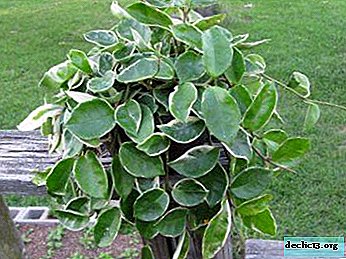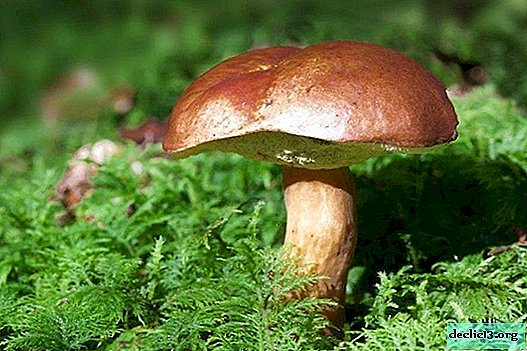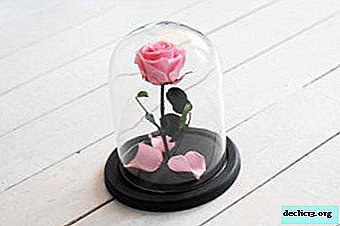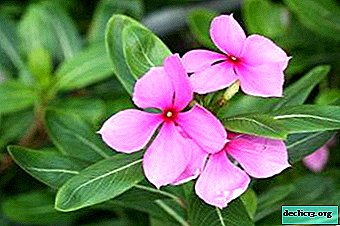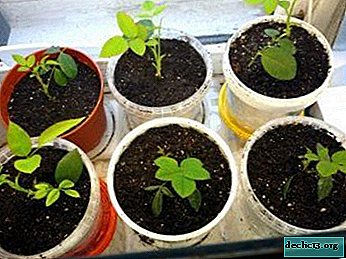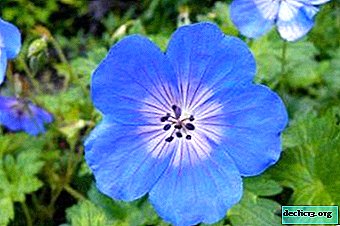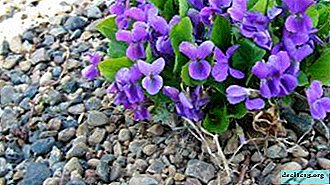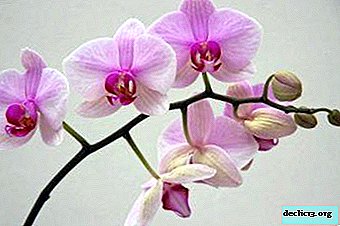Orchid care and what to do next, after it has bloomed?
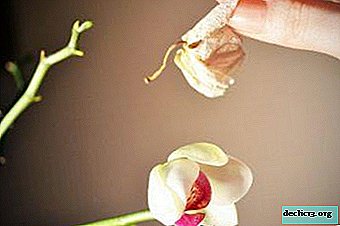
Beginning flower growers make a lot of mistakes when caring for an orchid, not taking into account the phases of its life cycle. Which leads to diseases and plant death. Orchid requires different care in different periods of her life.
How to care for orchids before and after flowering? Watering rules, top dressing, conditions of detention.
Read more about all this in detail in our article. Also watch a useful video on this topic.
Features of the plant life cycle
After flowering, the orchid has a dormant period. She is resting, gaining strength for the next phase of growth. Wherein:
- growth rate decreases;
- metabolism slows down.
How to care?
During the growing season
The growing season usually begins in late March - early April. At this time, there is active growth, vital processes are activated.
This is the phase when the plant grows:
- Sheet mass.
- The roots.
- Throws a peduncle.
- Lays a flower bud.
- Preparing for flowering.
What do we have to do?
If the plant is ill, has not very developed roots, and not very healthy leaves, then it is better not to allow flowering. Since in this case, flowering will weaken the plant even more. In this case, it is required:
 Top dressing.
Top dressing.- Adequate watering.
- Good lighting.
- The air temperature should be 20-23 degrees - during the day and 15-18 - at night.
- High humidity.
- Spraying.
- Regular inspection for diseases or pests.
If the plant has healthy roots and leaves, flowering can be stimulated.. To bloom the orchid:
- Watering should be reduced. In the wild, the orchid begins to bloom at the end of the rainy season. She perceives the drying of the substrate as an impetus for flowering.
- Provide good lighting if you need to shine with a lamp.
- Fertilize regularly (every two weeks).
- Spray the orchid from the spray bottle with warm, settled water.
- Maintain humidity indoors.
- The air temperature should be at least 23-25 degrees - during the day and 18-20 at night.
Top dressing
Essential Substances:
- Potassium - Promotes the formation of kidneys, carbohydrate metabolism, improves immunity.
- Nitrogen - promotes active growth of green mass, and makes the stem stronger. In this case, nitrogen can inhibit flowering.
- Phosphorus - enhances growth, stimulates flowering, is responsible for the health of the root system.
- Boron and Magnesium - responsible for the speed of vegetation, and the formation of buds.
- Iron - Transforms chlorosis (yellowing and death of leaves).
How to fertilize:
- Fertilizers before flowering should be applied from the moment of active growth until the first bud blooms.
- Before flowering, fertilizing should be applied, mainly containing nitrogen.
- The best option would be liquid top dressing, since it is precisely it that is evenly absorbed.
- When choosing a fertilizer, you should pay attention to the pH level. It should be equal to 5.5-6.5. Some fertilizers increase the acidity of the substrate, while others, on the contrary, increase the alkali content. Neither one is useful.
Tap water is not suitable for watering an orchid. It is best to use rain or melt water.
During rest
After flowering, a dormant period begins, which means that the plant needs rest. What to do next, when the flowers bloomed in the plant:
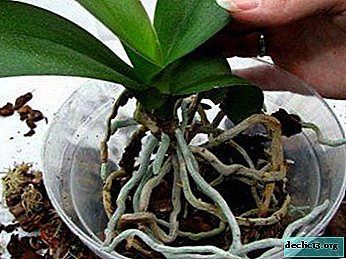 Reduce top dressing by about 2 times. This is especially true for the winter period. In order for the orchid to rest and not begin to grow actively again.
Reduce top dressing by about 2 times. This is especially true for the winter period. In order for the orchid to rest and not begin to grow actively again.- Remove dry flower stalk. After the peduncle has completely dried, it should be cut to the very base.
- Change the substrate or transplant into a new pot.
- When transplanting, be sure to check the roots. If sick, blackened, rotten roots are found, they should be removed.
In winter time
In winter, the conditions of detention will differ from those in the warm period. What is required in winter:
- Reduce watering to once every two weeks.
- Cancel feeding for three winter months.
- Cool room 15-20 degrees.
- Additional illumination.
- Lack of drafts. But at the same time, the premises should be regularly ventilated.
- Avoid hypothermia. If the flower is on the windowsill, it should be insulated, put foam or plywood under the pot.
- Humidification. With the onset of the heating season, the air in the room becomes dry. This means that additional hydration is required.
Peduncle pruning
An orchid that has faded needs pruning and is done during plant care. But before that, it should be carefully examined for damage and illness. If there are none, then only the peduncle needs to be cut - this is an escape on which there were flowers.
To do this, wait until it dries completely. If damaged pouring (darkened, yellowed, stained), they should also be removed. The optimal time for trimming is September - October.
Watch the video about the correct pruning of orchid stalk:
Transplanted faded orchid
Also, after flowering, it is advisable to transplant an orchid. Firstly, because she needs a fresh substrate.
Secondly, because when transplanting it is possible to inspect the roots and if you need to get rid of the sick or rotten, and also thoroughly rinse them.
Watch a video about an orchid transplant after flowering:
What to do next with it when it fades?
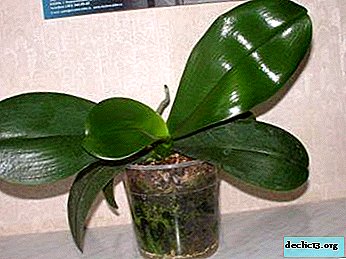 Watering should be left unchanged.. Reduce it is not worth it. This can only be done with the onset of cold weather and a decrease in air temperature. Watering an orchid with faded flowers should be settled or melt water at room temperature. At the same time, avoid getting water in the sinuses of the leaves.
Watering should be left unchanged.. Reduce it is not worth it. This can only be done with the onset of cold weather and a decrease in air temperature. Watering an orchid with faded flowers should be settled or melt water at room temperature. At the same time, avoid getting water in the sinuses of the leaves.- Feeding should be reduced in order to avoid re-vegetation and help the plant enter the dormant phase. Flower should be fed no more than once a month.
- Substrate and pot. When transplanting, it is necessary to change the substrate, rinse the plant and inspect the roots. If you need to remove diseased roots. If the orchid has grown from a pot, then it should be changed. If the roots are cramped in the pot and they crawl out - this is a sign that you need a larger pot.
- Lighting after flowering can be left unchanged. In this case, the flower should be protected from direct sunlight. If daylight hours are reduced, additional lighting is needed. For this, a phytolamp is suitable. Place it at a distance of 30 cm from the plant.
- Humidity and temperature. After flowering, the plant needs a standard temperature of 20-23 degrees. Humidity should also be maintained as usual.
- Transfer of the growing place. If the flower has enough light, and it feels good, then you do not need to rearrange the pot.
Errors and their consequences
Improper care of a faded orchid can lead to unpleasant consequences.
How not to care for the orchid at home after it has faded:
- Hormonal stimulation of flowering. The result can be a disease and death of the plant.
- Abundant watering year-round. May cause root decay, fungal diseases, and inhibit flowering.
- Non-compliance with irrigation rules. The main mistake is watering from a watering can. In this case, all excess moisture is collected in the pan and stagnates there. Which leads to rotting of the roots. The best option for watering is to immerse the pot in warm, standing water for 15-20 minutes.
- Lack of light. It’s the same as lack of nutrition. The plant becomes lethargic, weak flowering is absent. If this problem is not resolved in time, the flower may become ill or die.
- Not timely detected diseases. This often leads to death. If the disease is detected on time, and measures are taken: the affected areas are removed, the plant is treated with special means, the situation can be saved. If the disease is prolonged, then in 95% of cases, the flower dies.
When caring for an orchid at home, it is imperative to take into account the phases of the life cycle. After all, she has her own needs. They are dictated by the natural habitat. Do not neglect this. If you pay maximum attention to it and follow the rules of care, then the orchid will not only bloom regularly, but will also be able to give offspring, as well as increase its life expectancy.

 Top dressing.
Top dressing. Reduce top dressing by about 2 times. This is especially true for the winter period. In order for the orchid to rest and not begin to grow actively again.
Reduce top dressing by about 2 times. This is especially true for the winter period. In order for the orchid to rest and not begin to grow actively again. Watering should be left unchanged.. Reduce it is not worth it. This can only be done with the onset of cold weather and a decrease in air temperature. Watering an orchid with faded flowers should be settled or melt water at room temperature. At the same time, avoid getting water in the sinuses of the leaves.
Watering should be left unchanged.. Reduce it is not worth it. This can only be done with the onset of cold weather and a decrease in air temperature. Watering an orchid with faded flowers should be settled or melt water at room temperature. At the same time, avoid getting water in the sinuses of the leaves.